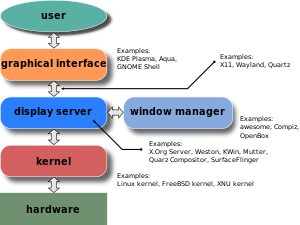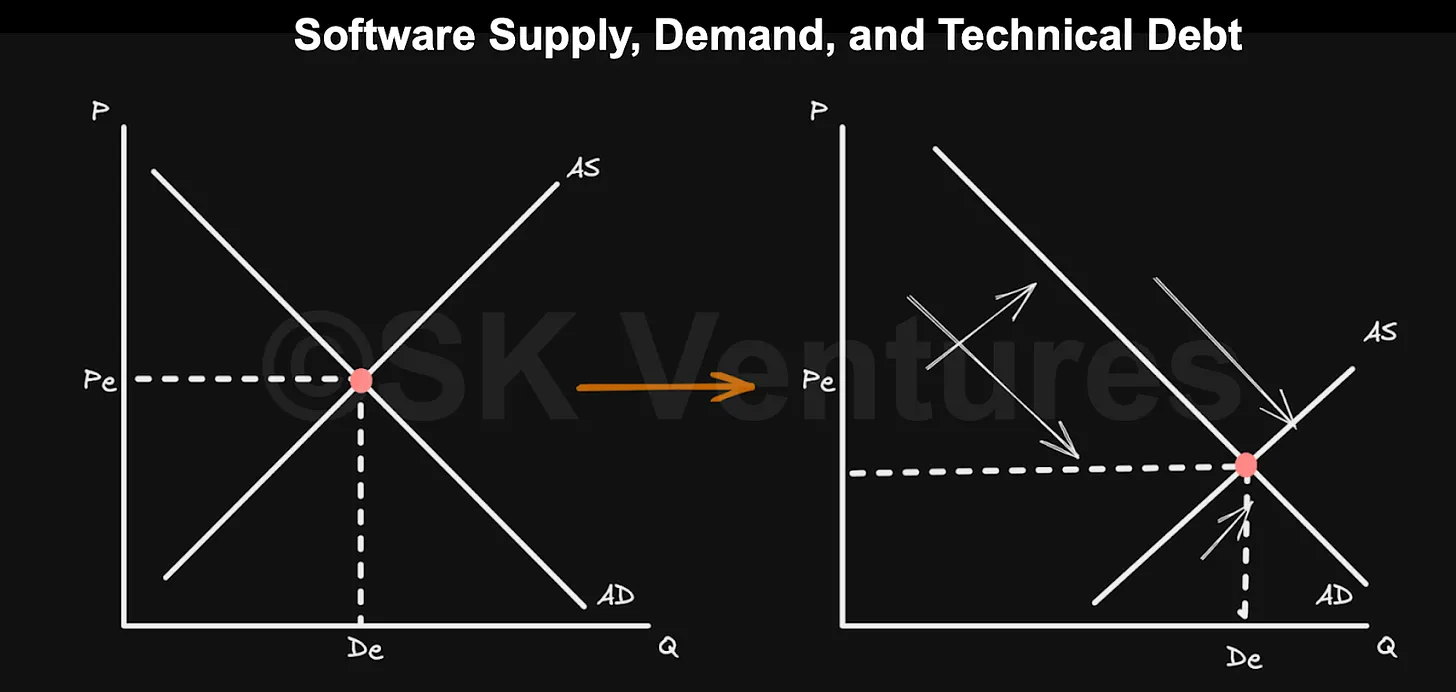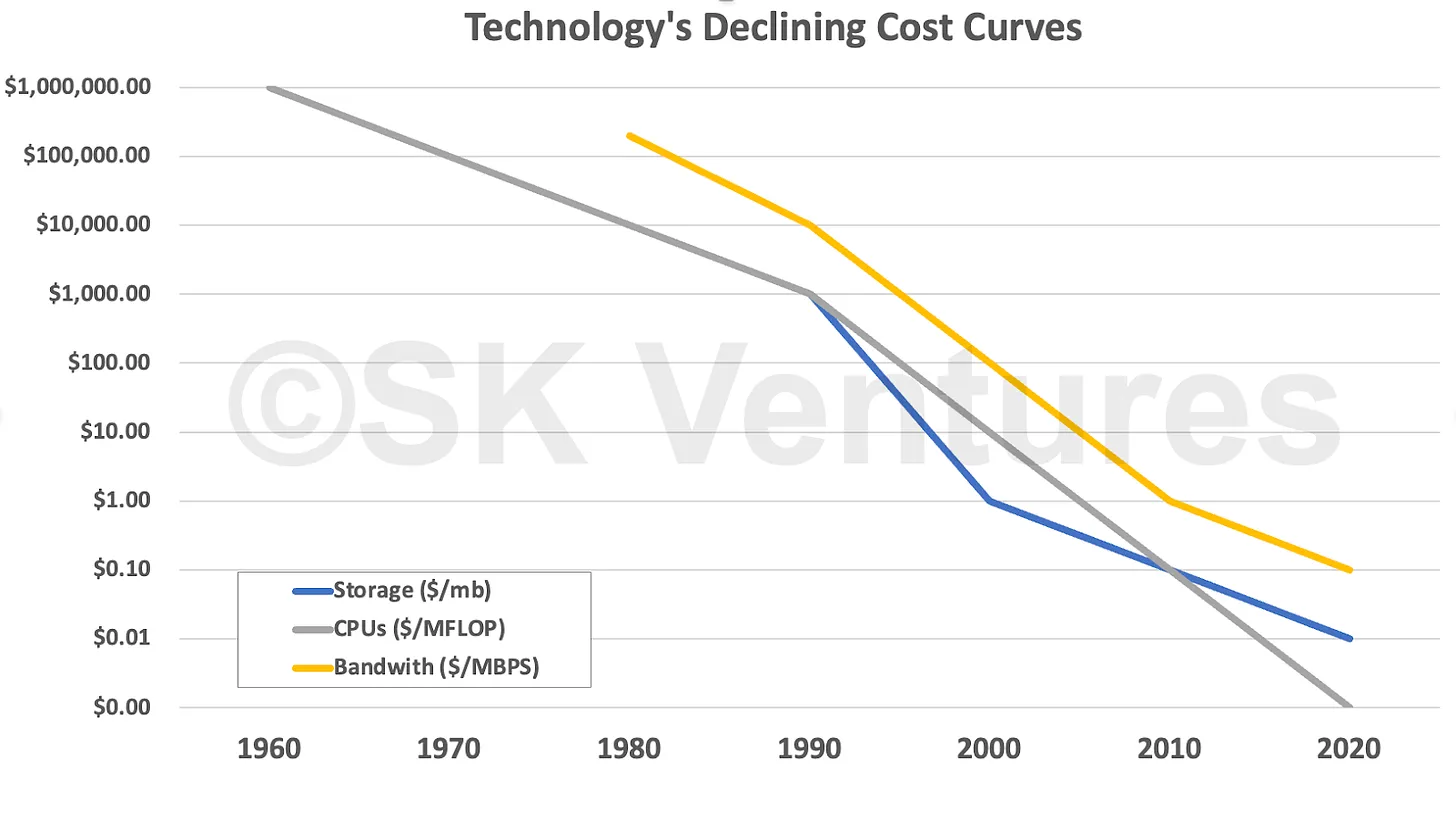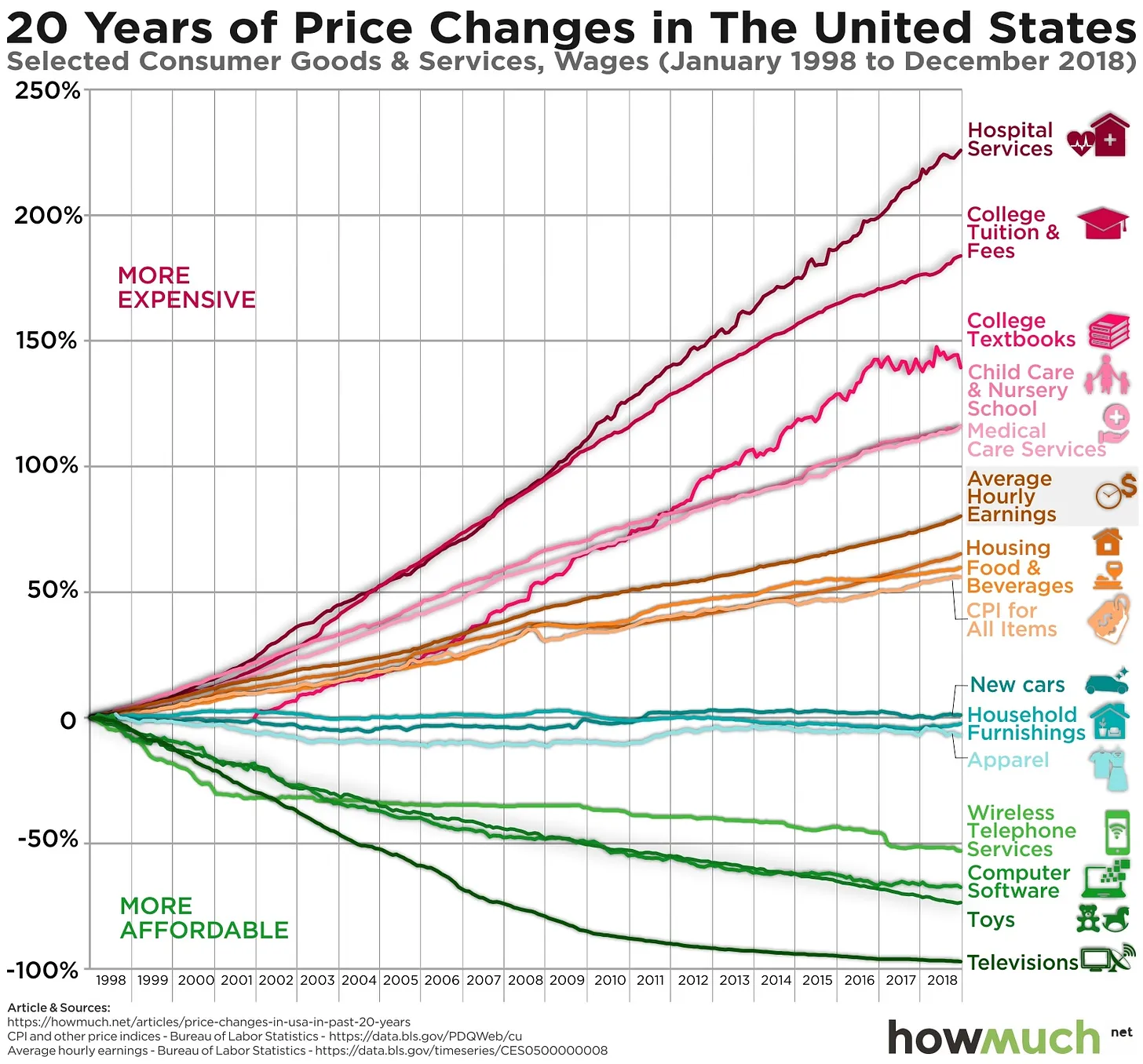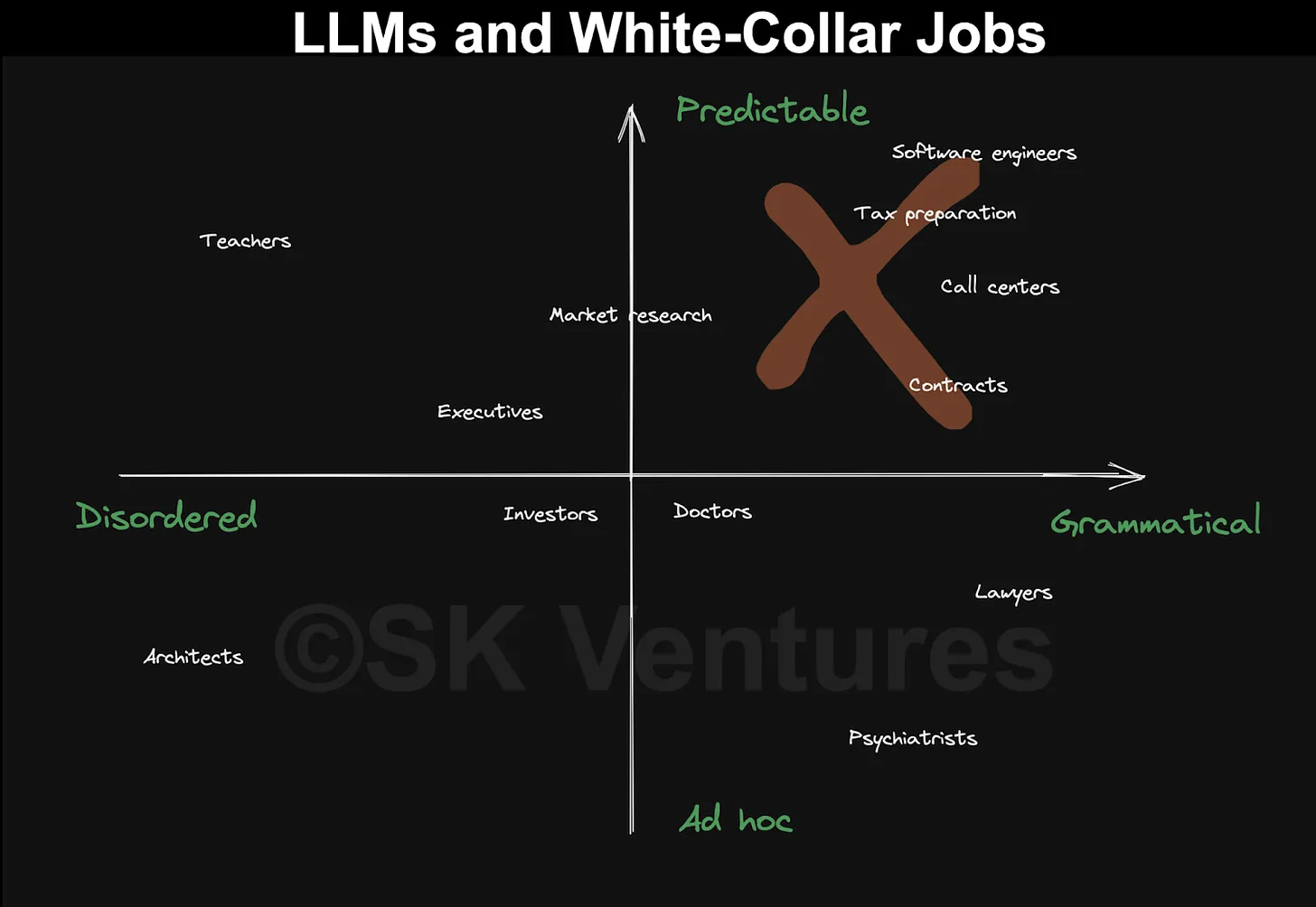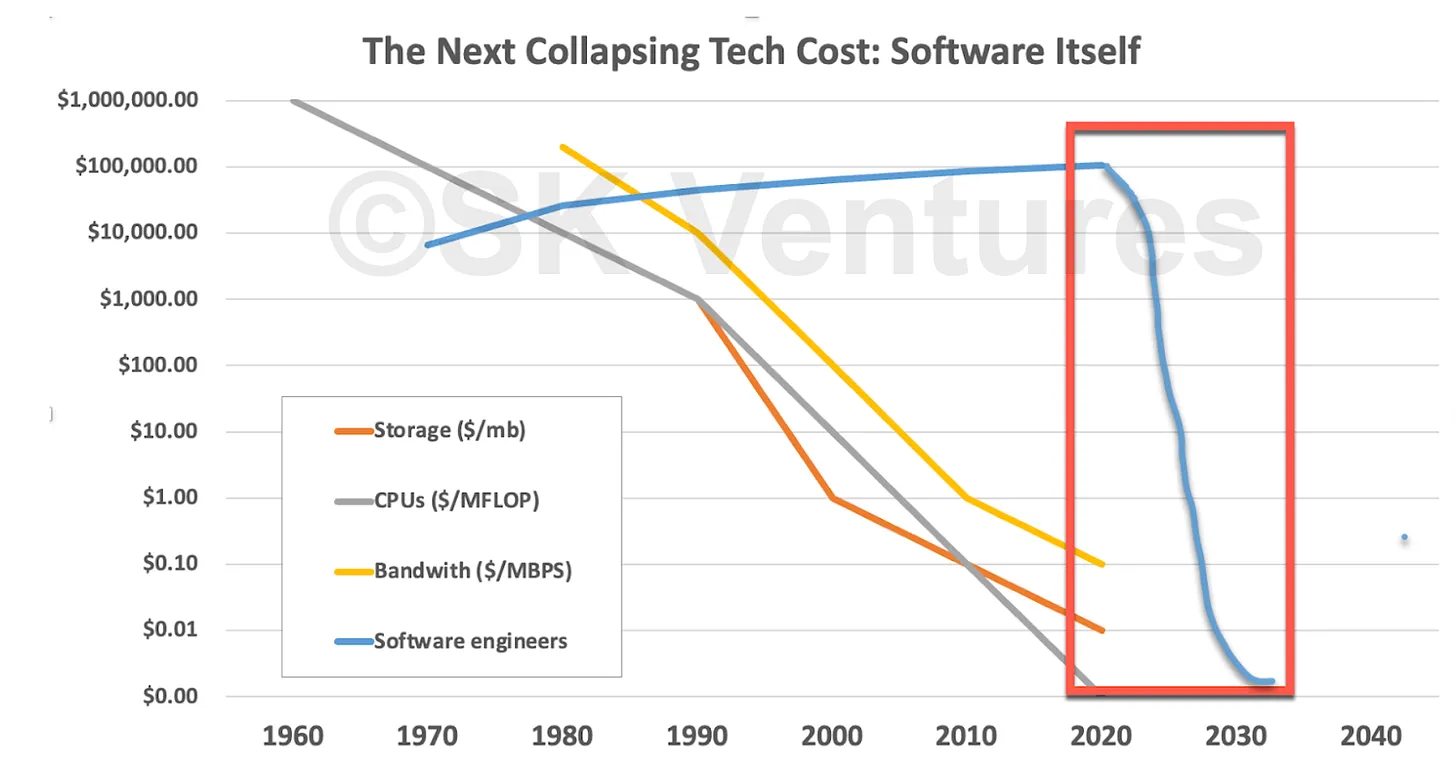Good question.
— Paramendra Kumar Bhagat (@paramendra) March 26, 2023
The Age of AI has begun Artificial intelligence is as revolutionary as mobile phones and the Internet. (Bill Gates).CI (Chat Interface) like GUI (Graphical User Interface). @BillGates @mukund @geoffreylitt
— Paramendra Kumar Bhagat (@paramendra) March 26, 2023
— Paramendra Kumar Bhagat (@paramendra) March 23, 2023
We’ve added initial support for ChatGPT plugins — a protocol for developers to build tools for ChatGPT, with safety as a core design principle. Deploying iteratively (starting with a small number of users & developers) to learn from contact with reality: https://t.co/ySek2oevod pic.twitter.com/S61MTpddOV
— Greg Brockman (@gdb) March 23, 2023
No. Try this. https://t.co/C0khsvgaaj @gdb @mukund @satyanadella @geoffreylitt Chat Interface
— Paramendra Kumar Bhagat (@paramendra) March 26, 2023
.@DavidSacks and @glennbeck discuss how the Biden administration's proxy war with Russia is pushing us closer to World War III:
— kanekoa.substack.com (@KanekoaTheGreat) March 25, 2023
"We have these crusaders at the State Department who just want to keep expanding NATO, and I don't know why they can't see that is unacceptable to the… pic.twitter.com/TZKgmp67i9
Full interview w/ @glennbeck:https://t.co/YY5eITuTUs
— kanekoa.substack.com (@KanekoaTheGreat) March 25, 2023
ChatGPT Plugins. How $GOOGL gets disrupted fairly quickly.
— Mukund Mohan (@mukund) March 26, 2023
Makes a strong case. https://t.co/ACRHH7RDPf
Yes
— Elon Musk (@elonmusk) March 26, 2023
ChatGPT Plugins the OpenAI ChatGPT plugins might just be the next big thing. ..... Google has been the undisputed ruler of the customer journey for years now, dominating both browsers with Chrome and search engines with Google.com. They’ve even gone a step further by introducing their own suite of products to capture more data on the user and replace other websites, like Google Flights and Google For Retailer. It’s clear that Google has been playing the long game, but is it time for a new player to shake things up? ........ forget typing in a search bar, you can now talk directly to an agent and get the information you need. ........ until two days ago, ChatGPT was still “limited” because it didn’t have access to the latest information and the “internet”. ..... The introduction of the ChatGPT plugins has revolutionized the game yet again - ChatGPT now has plugs into the “internet” and can be fed with all the websites out there. This means that the traditional customer journey is about to get a serious shake-up. ....... What if OpenAI doesn’t need Chrome or any other browser? .
The most important thing I will read today.
— Paramendra Kumar Bhagat (@paramendra) March 26, 2023
Why did Steve Martin (actor) cross the road (near Little Church, Manhattan)? He saw me walking towards him. I was just going out and about.
— Paramendra Kumar Bhagat (@paramendra) March 26, 2023
What if OpenAI doesn’t need Chrome or any other browser? What if they don’t need middle-men either? ..... they could allow operation providers to connect directly with customers through the ChatGPT interface
What happens in the future.
— Mukund Mohan (@mukund) March 26, 2023
Goodbye $GOOGL pic.twitter.com/IA6wkFgSk7
Right now. pic.twitter.com/qVb7D3Z9VZ
— Mukund Mohan (@mukund) March 26, 2023
Your own app store.
— Paramendra Kumar Bhagat (@paramendra) March 23, 2023
Just might be the top embed
— Paramendra Kumar Bhagat (@paramendra) March 23, 2023
This is actually profound b/c you compare two cultures. "Nepali lai Switzerland banaidine" has been the most common refrain of top Nepali politicians. :)
— Paramendra Kumar Bhagat (@paramendra) March 23, 2023
This is more than 160 characters. How did you do that? Why can't I?
— Paramendra Kumar Bhagat (@paramendra) March 23, 2023
Wow. Last I knew she was an intern at USV
— Paramendra Kumar Bhagat (@paramendra) March 23, 2023
“You’re not a bank failure. You’re a bank disappointment.”
— Douglas A. Boneparth (@dougboneparth) March 23, 2023
Unpopular opinion.
— Eva Weinstein (@EvaWBos) March 22, 2023
Sometimes I don’t want to be a female founder I just want to be a founder.
😞
Say hello to @dineshprasain at Jal Mahal, ambassador!
— Paramendra Kumar Bhagat (@paramendra) March 23, 2023
7. In response to Tsai Ing-Wen's transit through the United States, what might the Chairman of the American Institute in Taiwan do? What topics are likely to be discussed?
— Paramendra Kumar Bhagat (@paramendra) March 23, 2023
8. How will the US link the Taiwan issue with the war in Ukraine?
💯
— Elon Musk (@elonmusk) March 23, 2023
Or good public transportation. Electric, driverless buses.
— Paramendra Kumar Bhagat (@paramendra) March 23, 2023
7. In response to Tsai Ing-wen's transit through the United States, what might the chairman of the American Institute in Taiwan do? What topics are likely to be discussed?
— Paramendra Kumar Bhagat (@paramendra) March 22, 2023
8. How will the US link the Taiwan issue with the war in Ukraine?
Eat fruits.
— Paramendra Kumar Bhagat (@paramendra) March 22, 2023
I listened through it and was glad I did.
— Paramendra Kumar Bhagat (@paramendra) March 26, 2023
Good question.
— Paramendra Kumar Bhagat (@paramendra) March 26, 2023
25: GPT-4: AI Is Eating Software https://t.co/KJNJKeVGtm
— Paramendra Kumar Bhagat (@paramendra) March 26, 2023
Still?
— Paramendra Kumar Bhagat (@paramendra) March 25, 2023
Yes, the Zapier plug-in. :)
— Paramendra Kumar Bhagat (@paramendra) March 24, 2023
Yeah, not possible to make motorcycles safe
— Elon Musk (@elonmusk) March 24, 2023
Just 10 of these on 10 major routes running every 30 minutes will take half the cars off Kathmandu roads.
— Paramendra Kumar Bhagat (@paramendra) March 24, 2023
"They were friends. I called up a friend and then got with another friend, and then they got one of their friends and we did it"
— Andy Weissman (@aweissman) March 26, 2023
Lil Yachty on how he got started on his latest record, which seems like a good approach in general to doing or starting anything pic.twitter.com/777Rq5jnlI
But also leads to a lot of white guys working with each other.
— Paramendra Kumar Bhagat (@paramendra) March 26, 2023
Big congratulations to the Tesla Germany team!! https://t.co/ijwFUmmgA2
— Elon Musk (@elonmusk) March 25, 2023
AI generates flying cars. Pictures of.
— Paramendra Kumar Bhagat (@paramendra) March 26, 2023
there are times that you know are going to be way more fun to remember than they are to live through.
— Sam Altman (@sama) March 23, 2023
somehow knowing this helps put the tiredness in perspective.
Good question.
— Paramendra Kumar Bhagat (@paramendra) March 26, 2023
Are you ready for the hummingbirds?🐦We have been making these great feeders for 34 years now and our hummingbird feeders have stood the test of time
— Binne (@Binne_co) March 25, 2023
🛒SHOP Here👉 https://t.co/zE9RXTMXJL pic.twitter.com/ucZVRtuXkC
Startup founders after landing their first paying customer. pic.twitter.com/cT6SgD3CVK
— Andrew Gazdecki (@agazdecki) March 26, 2023
No Ukraine offensive without more weapons – Zelensky https://t.co/UUKB3ZejlN
— BBC News (World) (@BBCWorld) March 25, 2023
NPR laid off 10% of its staff this week and announced that it would stop production of four popular podcasts to make up for a $30 million gap in its budget. https://t.co/BL9gv04Z1b
— The New York Times (@nytimes) March 25, 2023
I have to say this SEC wells notice has caused a noticeable boost in morale.
— Brian Armstrong (@brian_armstrong) March 25, 2023
Nice to have a common cause, but never forget the main goal is to build better products for our customers. Improving the policy landscape is necessary but not sufficient.
🤯 this paper demonstrates you can improve gpt4 performance an astounding 30% by asking gpt4 to reflect on “why were you wrong?”, and generate a new prompt for itself taking that reason into account until it is correct.
— Siqi Chen (@blader) March 25, 2023
this is how humans learn!https://t.co/sJFOEFCLpq
👇 pic.twitter.com/PUbRsVGqY8
BAD SOURCES OF DOPAMINE:
— Unleash Your Mind (@MentalUnleash) February 17, 2023
Porn
Alcohol
Junk food
Gambling
Excessive screen time
GOOD SOURCES DOPAMINE:
Music
Sunlight
Meditation
Working out
Cold showers
Learn the difference.
I listened through it and was glad I did.
— Paramendra Kumar Bhagat (@paramendra) March 26, 2023
Anytime my ego gets out of control, which is like every 10 minutes, I look at the sky and hold out my hand as far as it can reach, stick out my thumb, and remember that in that thumb is 100,000 galaxies each with 100,000 stars.
— Robert Scoble (@Scobleizer) March 26, 2023
We are playing one weird game!
And it is about… https://t.co/LvQkaIVFPT
Not a single EU country has condemned the UK for sending ammunition with depleted uranium. The radioactive matter may plague both Ukrainians and Russians for generations with birth defects and cancer.
— Glenn Diesen (@Glenn_Diesen) March 25, 2023
Absolutely disgusting, so much for EU "values"
https://t.co/7xrQkufmPe
“Death is the ultimate safeguard against the darkest angels of our nature” ~ Falconer Quellcrist
— MrBanks💰 (@Mrbankstips) March 25, 2023
Humans aren’t meant to live forever, it corrupts even the best of us and @elonmusk knows this. pic.twitter.com/M7ip9LCHTl
Absolutely
— Elon Musk (@elonmusk) March 25, 2023
Demand for user-made content is growing. The video-game business has done a better job than Hollywood of turning this to its advantage https://t.co/8km68JIqvS
— The Economist (@TheEconomist) March 26, 2023
You might have a one-week head start on everyone else. You are one of the lucky few who know what AI and GPT are all about, because you stuck with Twitter and/or me.
— Robert Scoble (@Scobleizer) March 26, 2023
What did you do with that week?
Everyone will catch up.
Why do I say that?
Because people used to tell me… https://t.co/olgMUI7dLo
Me + glass of water in the middle of the night https://t.co/d25Jj4Feok
— Varia Bortsova 💙💛 (@variainayurt) March 25, 2023
If Kyiv’s territorial integrity is not fully restored at the end of the war, revisionist powers such as Beijing and Tehran could begin to look for holes in NATO’s nuclear umbrella, write @samagreene and @apolyakova. https://t.co/43rFwEegTY
— Foreign Affairs (@ForeignAffairs) March 26, 2023
Before the Ukraine war, the U.K.’s real estate sector had a reputation as a place where elites could store their illicit cash. To curb this practice, the U.K. reintroduced legislation making it harder to own property anonymously. Has it had an impact? https://t.co/n0ZBKcR4qd
— The Brookings Institution (@BrookingsInst) March 25, 2023
Get rid of these fraying charging cables. Meet STATIK360, the Universal 3-in-1 fast-charging cable that is INCAPABLE of fraying!
— STATIK (@StatikCo) March 14, 2023
गोलघरमा राख्नुको अर्थ मृत्युको फैसला सुन्नु मात्रै हुन्थ्यो । हामी गोलघरमा मृत्यु पर्खेर बसेका थियौं । आफूलाई मारिने दिन कुर्दै बसेका थियौं । @kpsharmaoli https://t.co/0jsxQqDAT0
— ekantipur (@ekantipur_com) March 26, 2023
Despite countless headlines on backsliding democracies and increasing authoritarianism, the world remains predominantly democratic: a fact unthinkable in the early 1800s, when the number of liberal democracies was zero.
— Peter H. Diamandis, MD (@PeterDiamandis) March 25, 2023
Bill Gates explains why AI is as revolutionary as personal computers, mobile phones, and the Internet, and he gives three principles for how to think about it. https://t.co/e32jLv7Dcc via @billgates
— Paramendra Kumar Bhagat (@paramendra) March 22, 2023
My most frequently used AI tools. Until $MSFT kills them all with CoPilot for Office365 😁 pic.twitter.com/eUtywpi3Ty
— Mukund Mohan (@mukund) March 19, 2023
We need everlasting life.
— Paramendra Kumar Bhagat (@paramendra) March 19, 2023
For now
— Elon Musk (@elonmusk) March 26, 2023
Absolutely
— Elon Musk (@elonmusk) March 25, 2023

